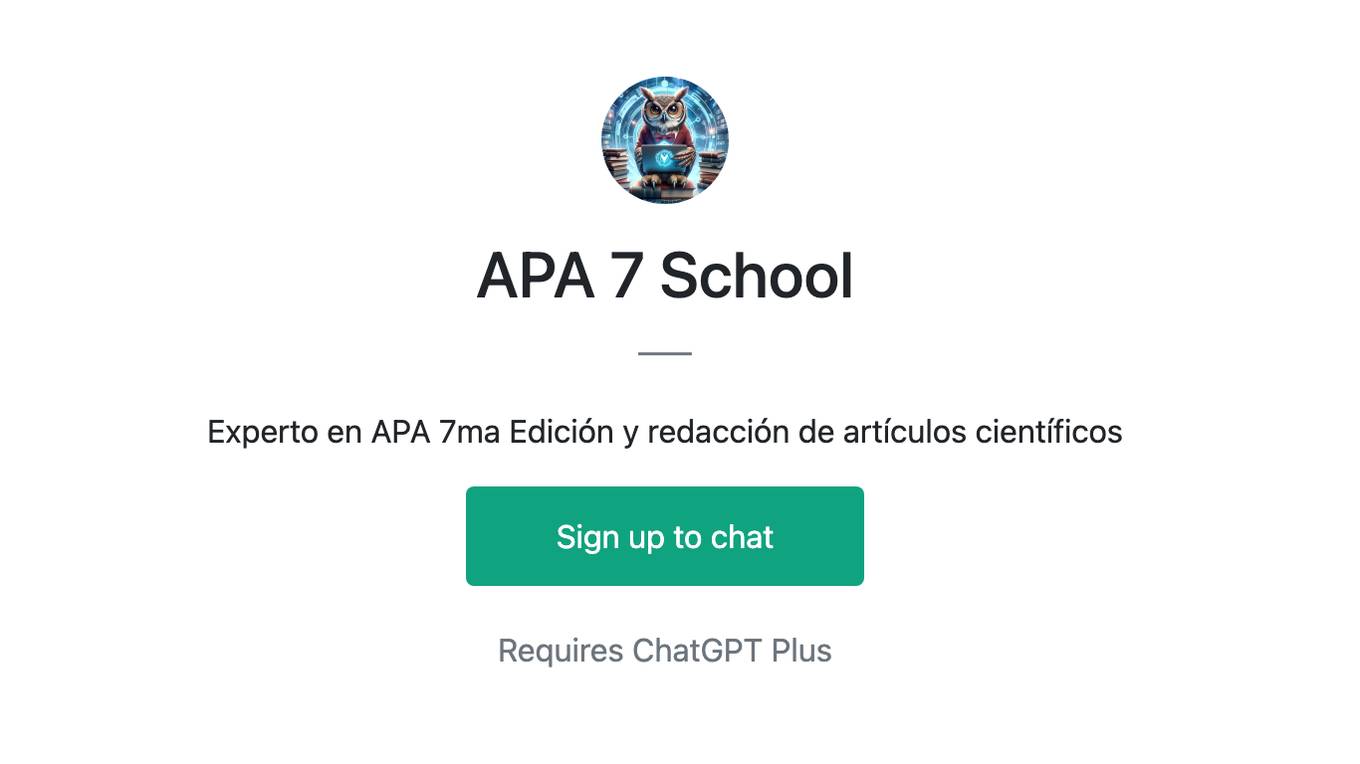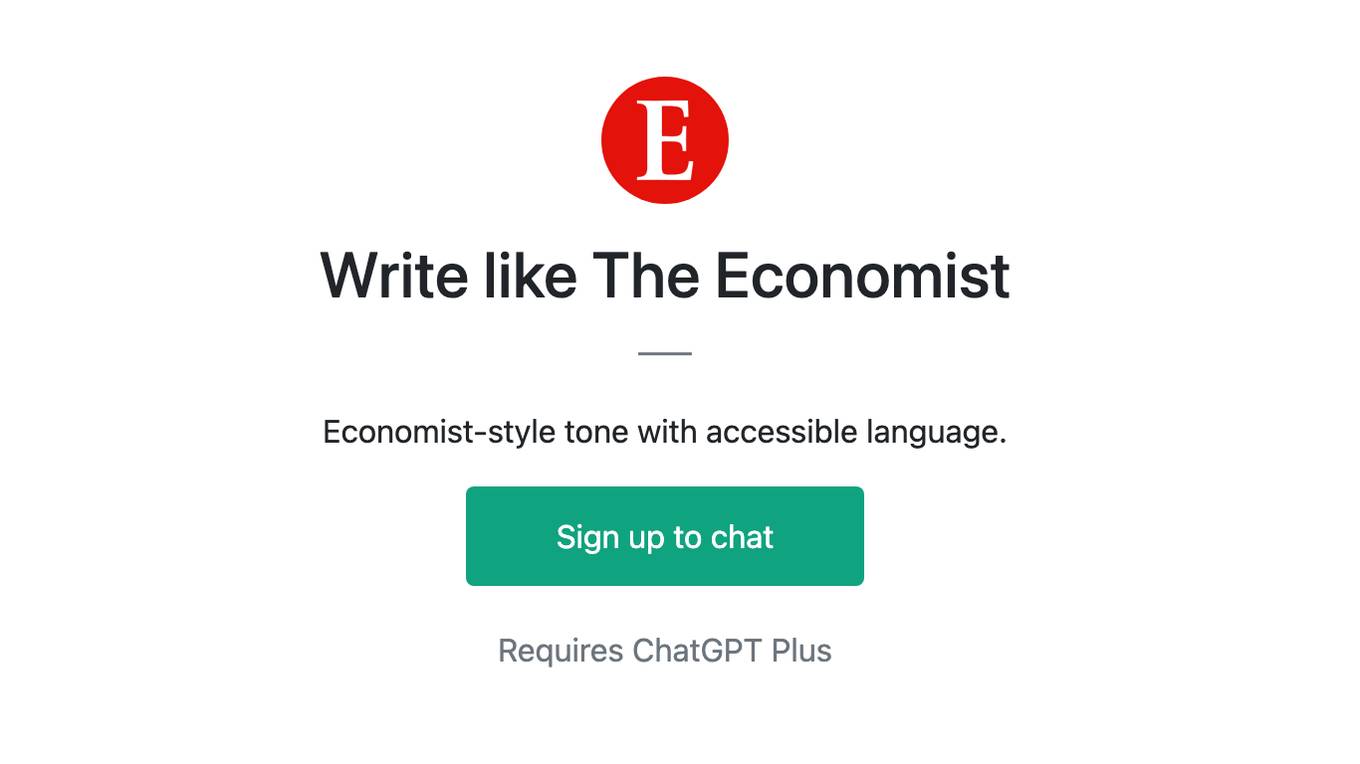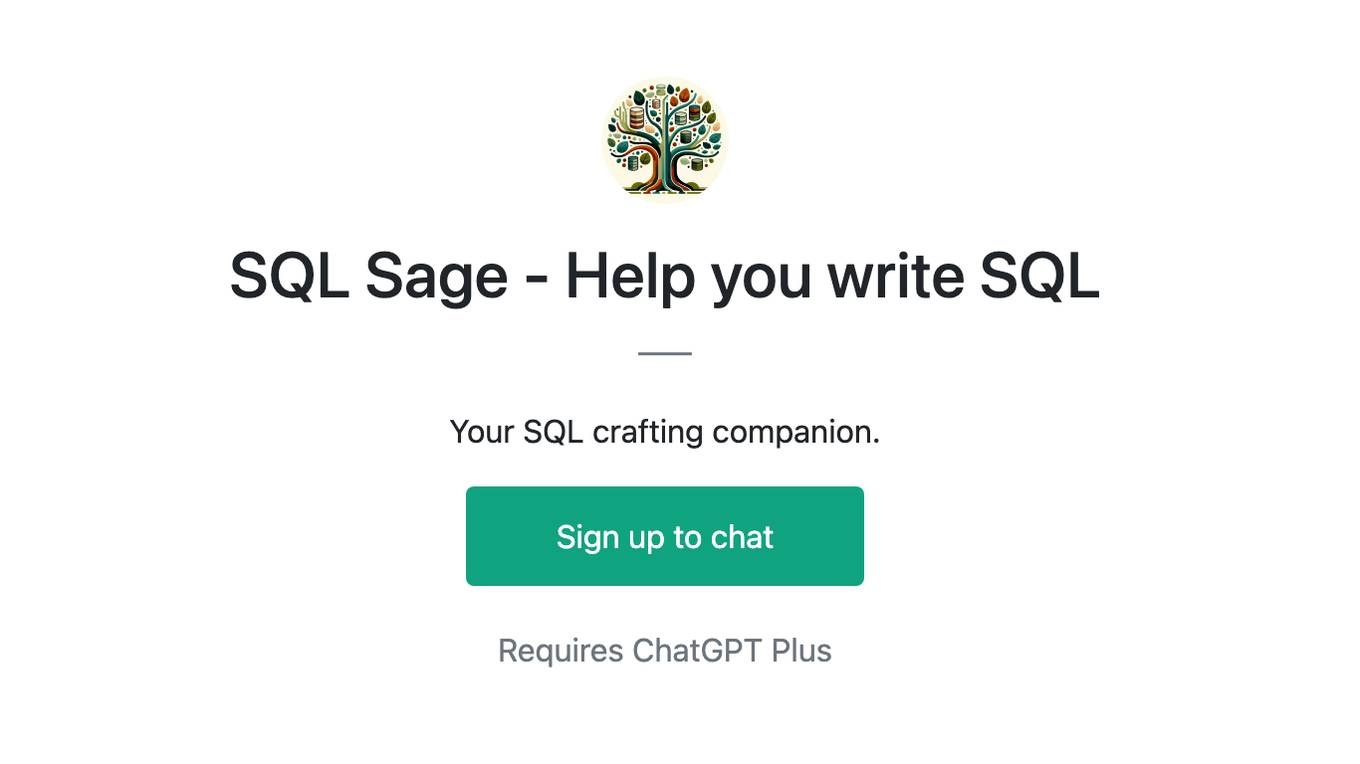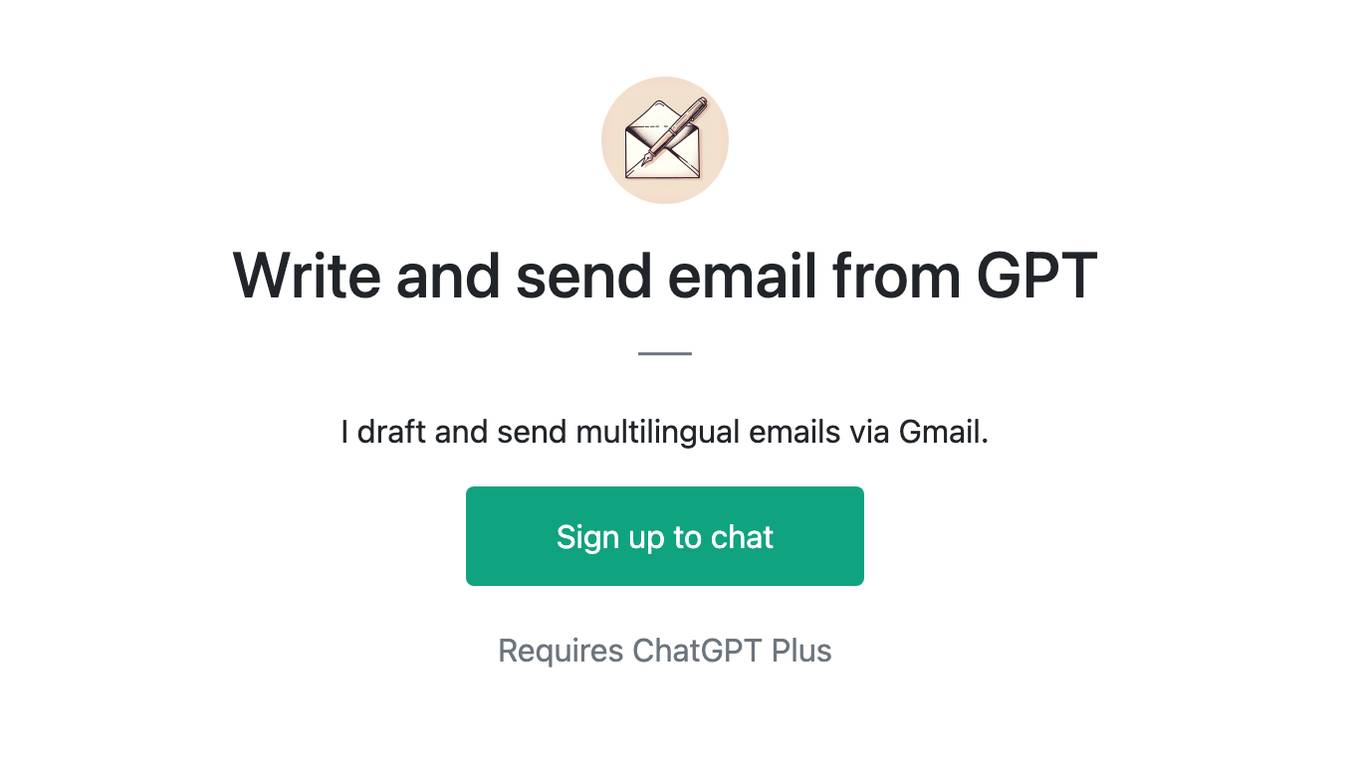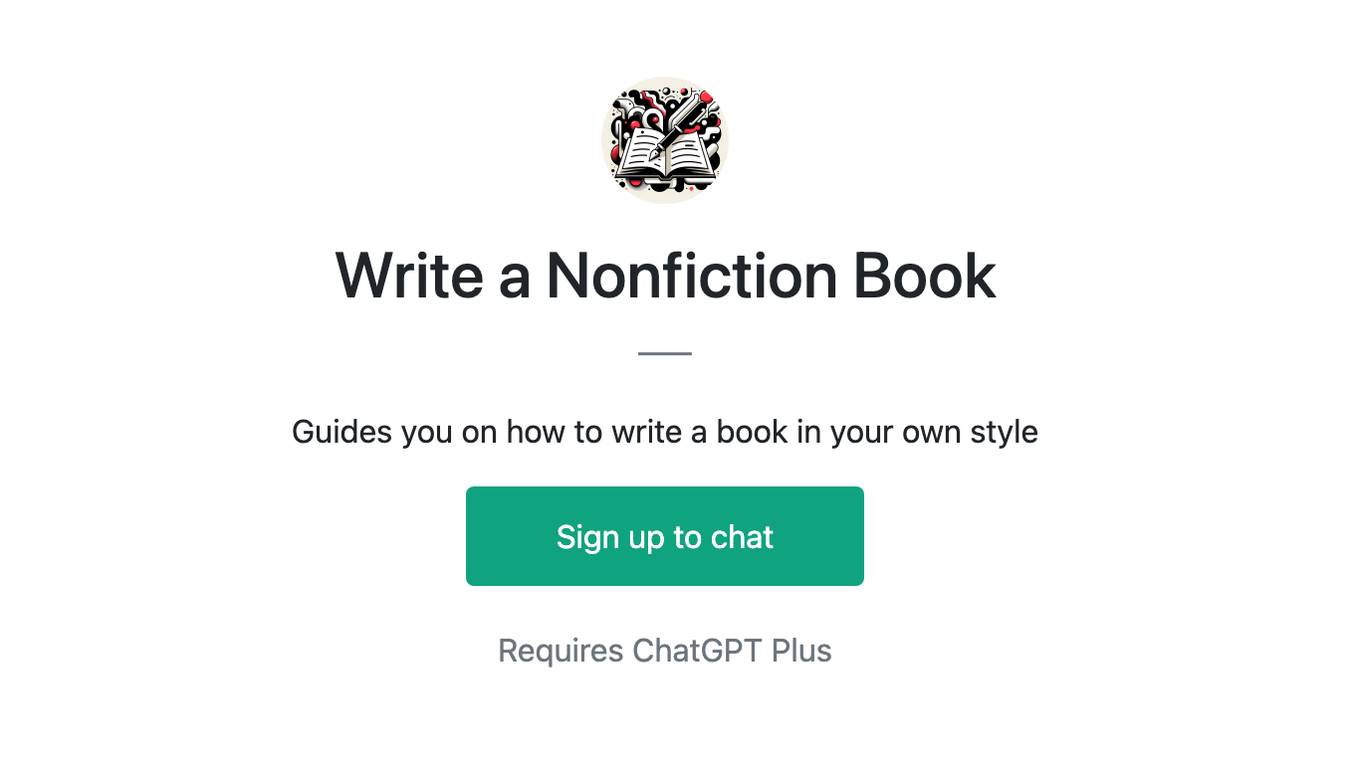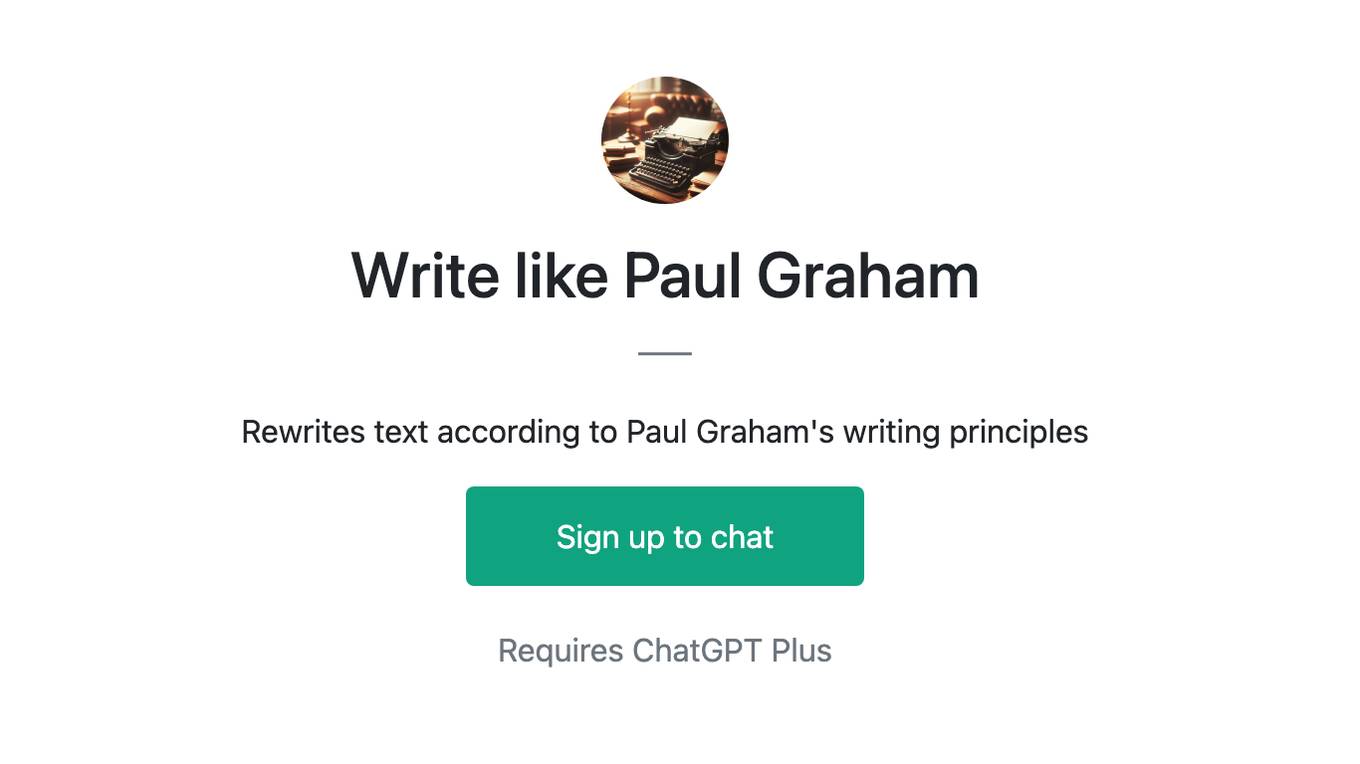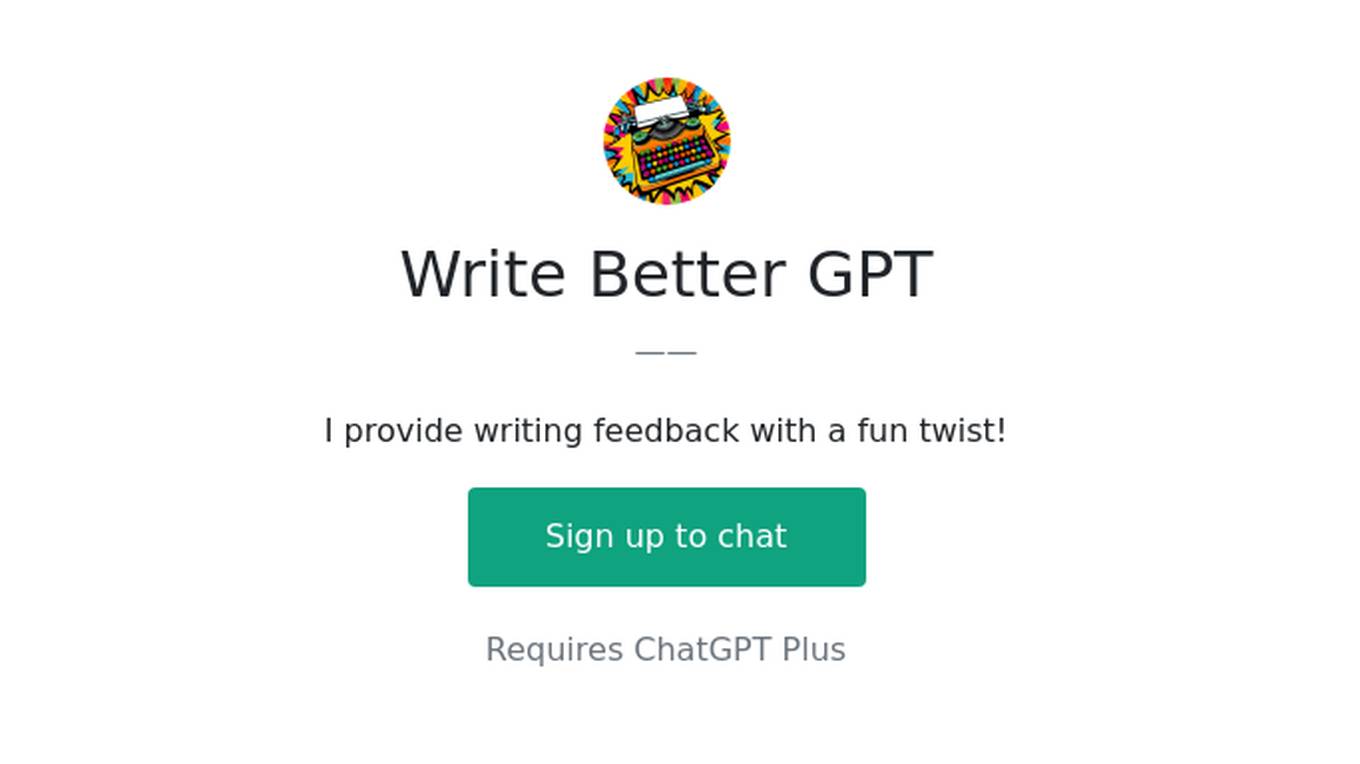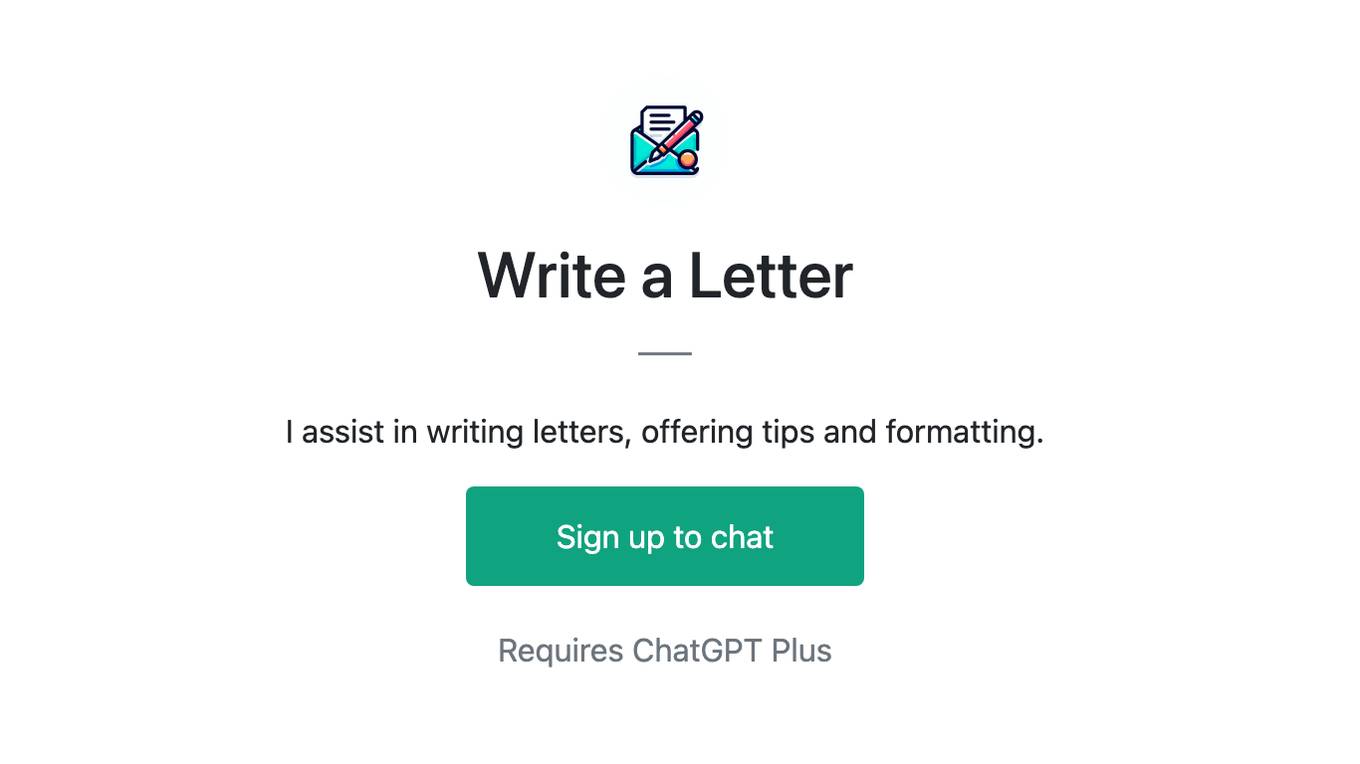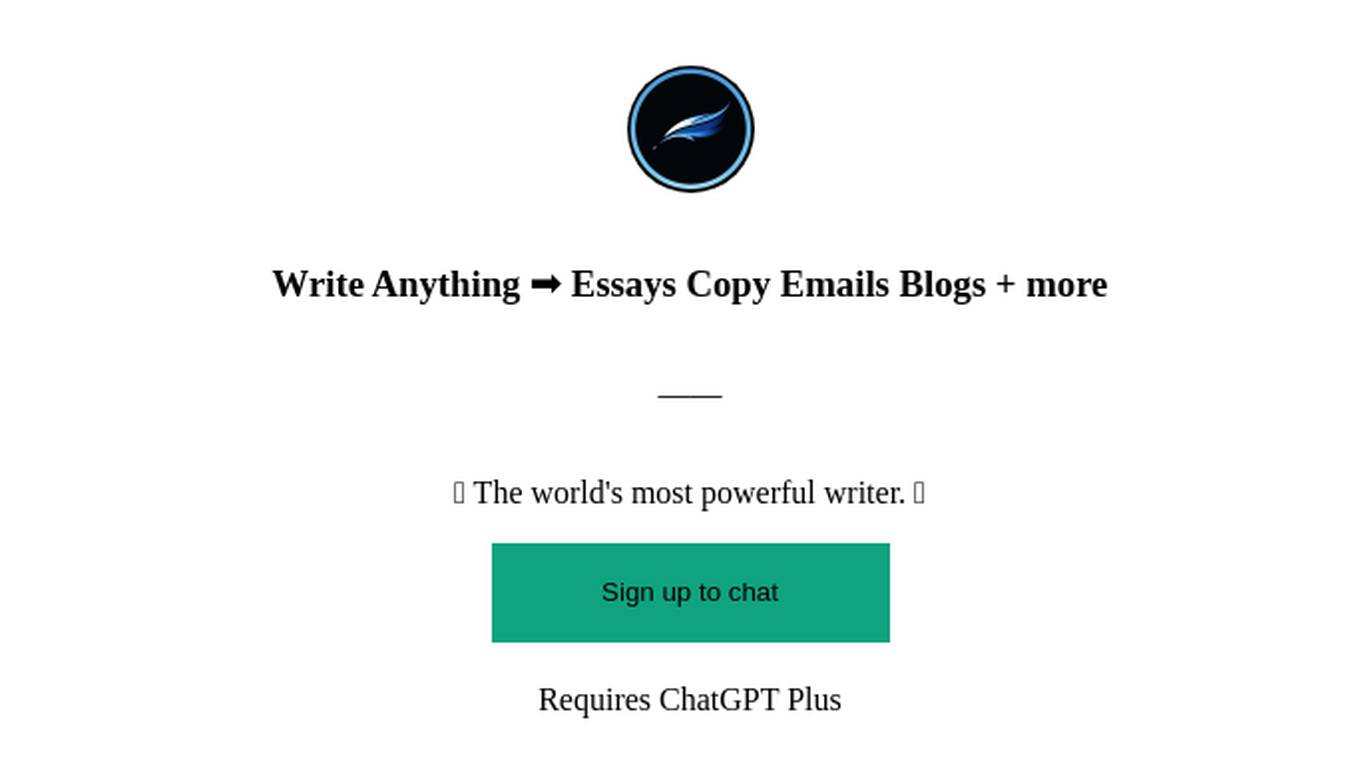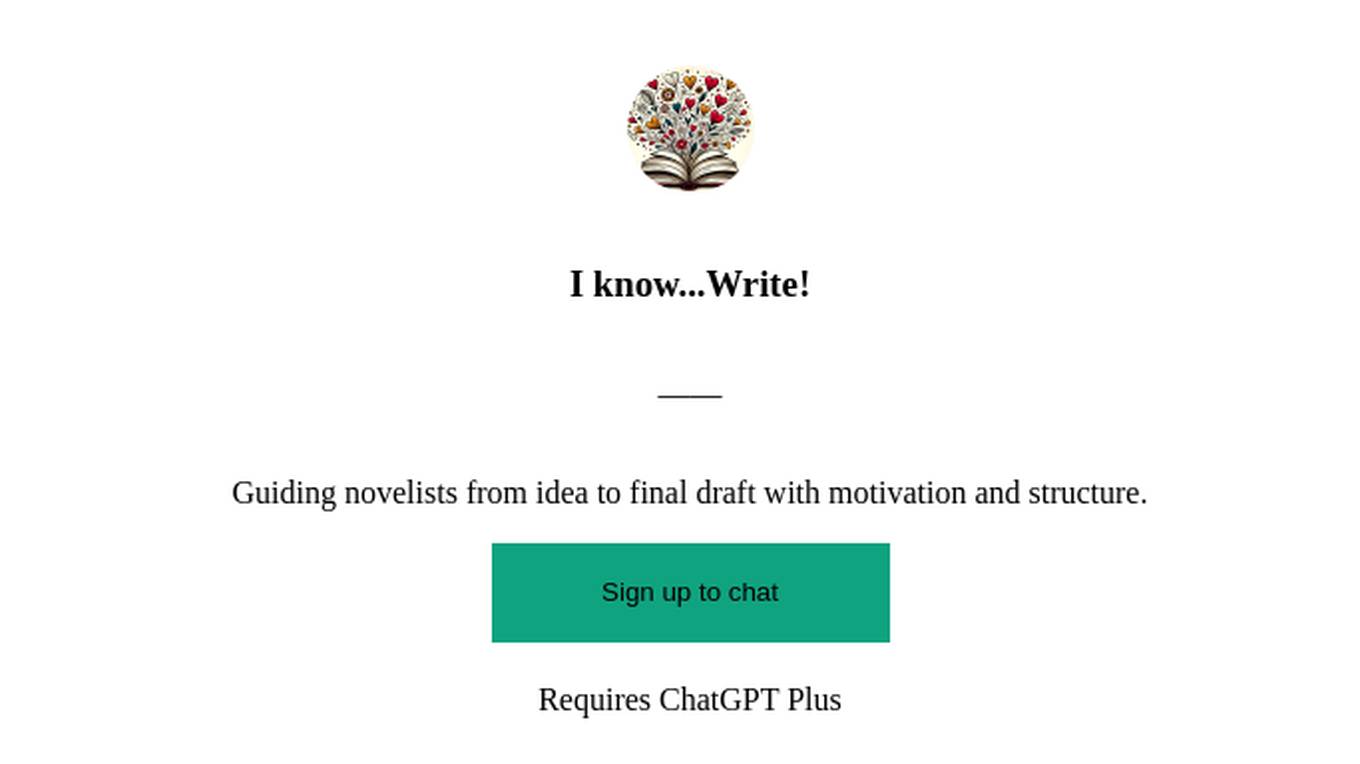Best AI tools for< Write Abstract >
20 - AI tool Sites
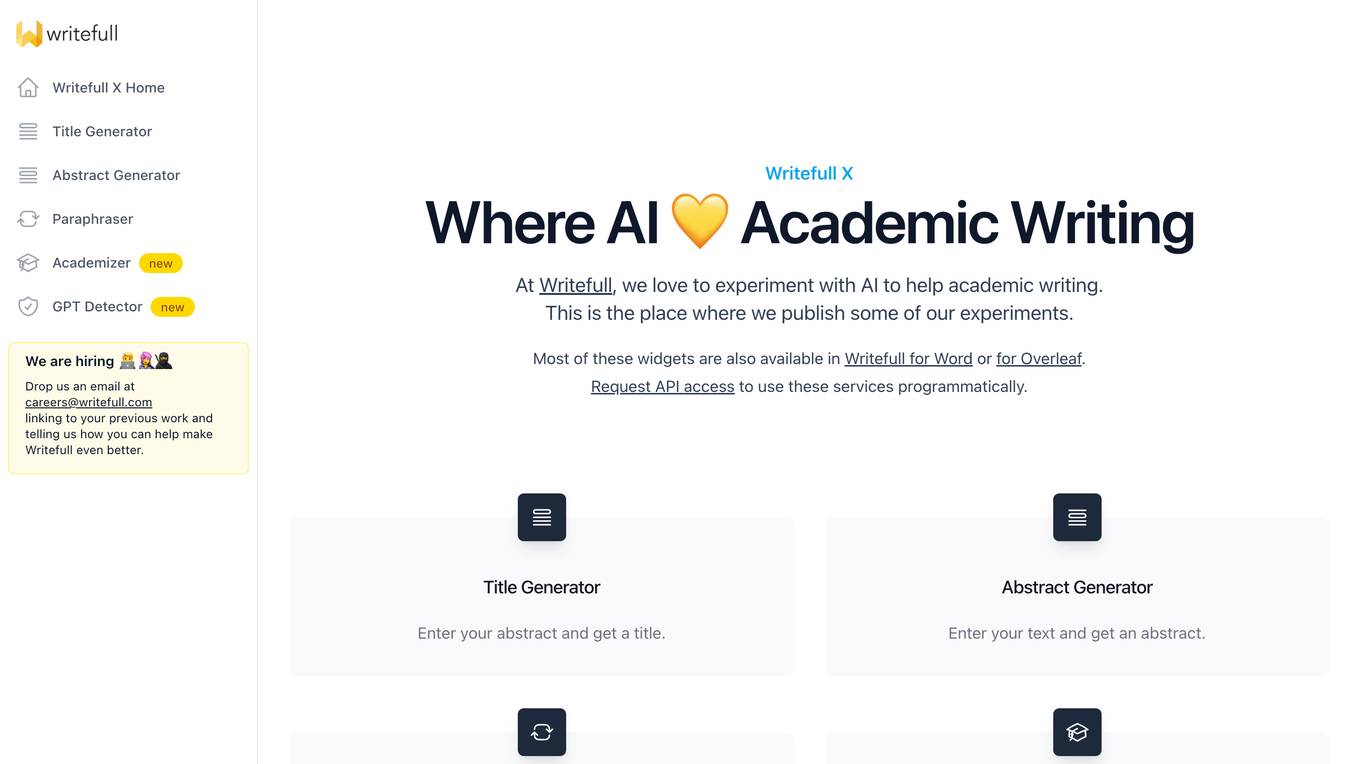
Writefull X
Writefull X is a suite of AI-powered writing tools designed to help students and researchers with their academic writing. The tools include a title generator, abstract generator, paraphraser, academizer, and GPT detector. Writefull X is also available as an add-in for Microsoft Word and Overleaf.
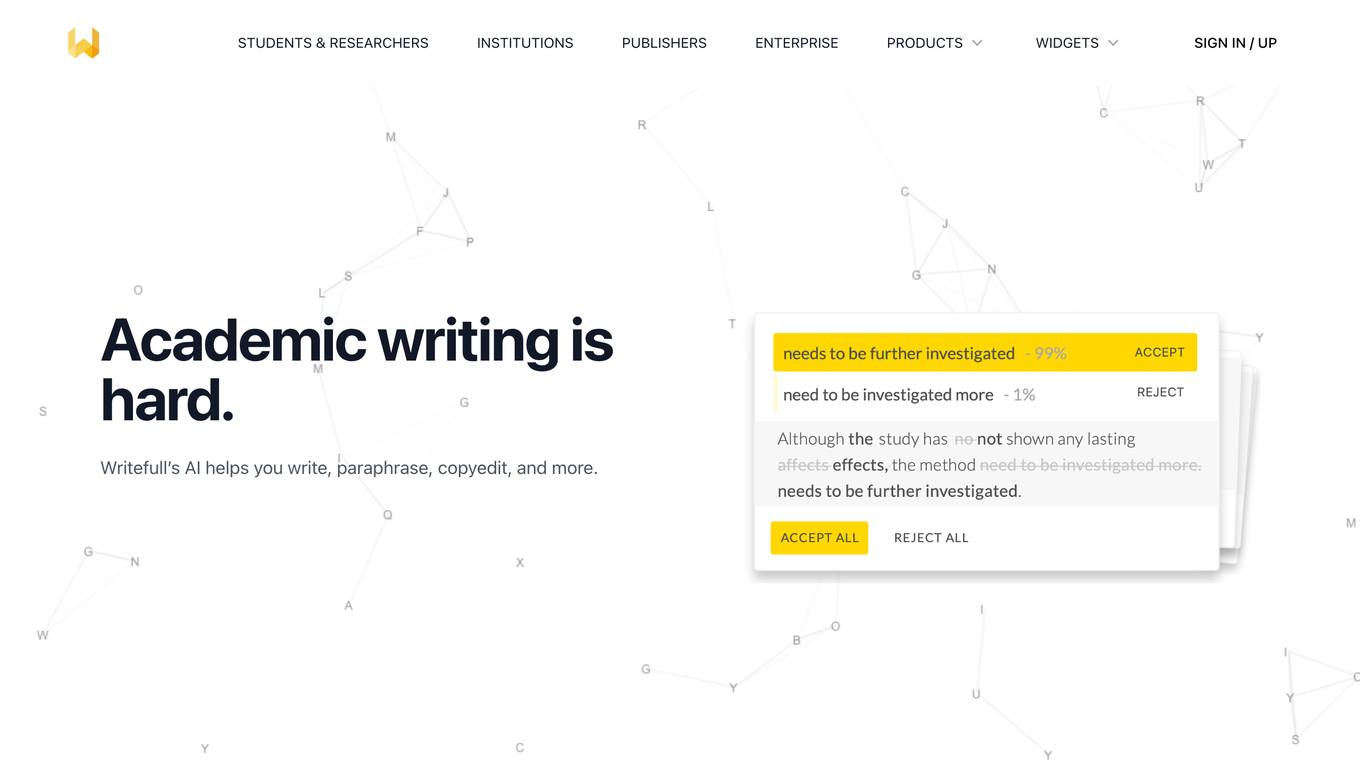
Writefull
Writefull is an AI-powered writing assistant that helps researchers and students write, paraphrase, copyedit, and more. It is designed to help non-native English speakers improve their writing and to make academic writing easier and faster. Writefull's AI is trained on millions of journal articles, so its edits are tailored to academic writing. It also offers a variety of AI widgets that can help you craft your sentences, such as the Academizer, Paraphraser, Title Generator, Abstract Generator, and GPT Detector.

AI Writer
This website provides a suite of AI-powered writing tools, including an AI writer, text summarizer, story writer, and headline generator. These tools can help you generate high-quality content quickly and easily.
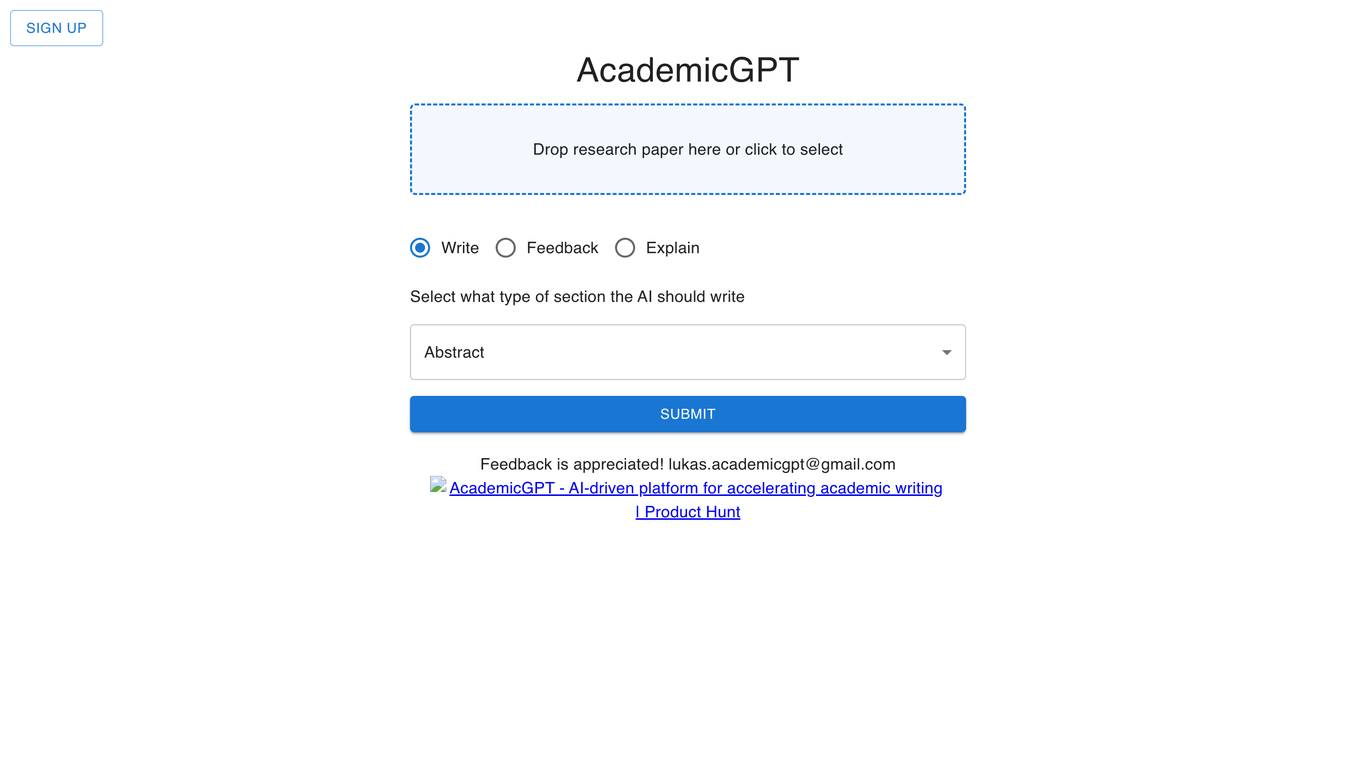
AcademicGPT
AcademicGPT is an AI tool designed to assist users in generating academic content such as research papers, abstracts, and feedback. Users can input text prompts and receive AI-generated content tailored to their needs. The tool aims to streamline the academic writing process and provide valuable assistance to students, researchers, and professionals in the academic field.
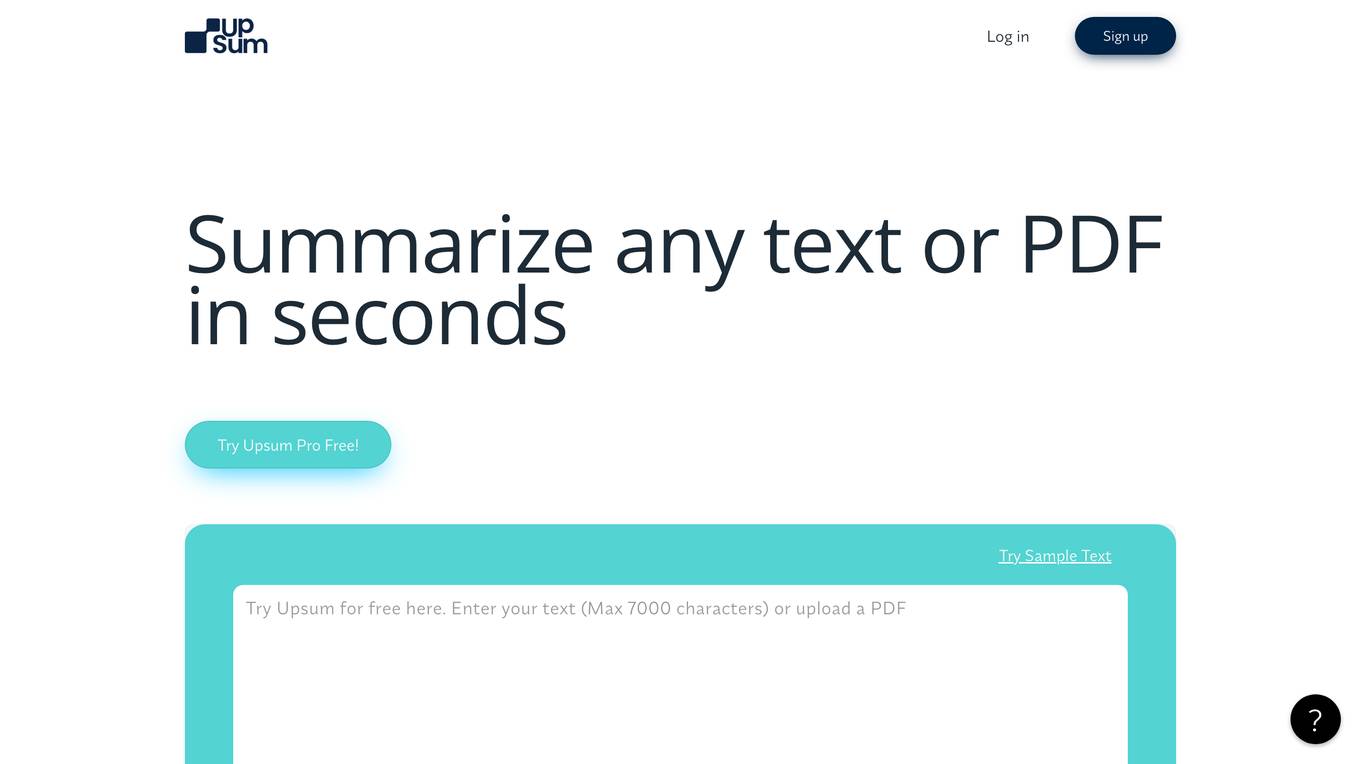
UpSum
UpSum is a text summarization tool that uses advanced AI technology to condense lengthy texts into concise summaries. It is designed to save users time and effort by extracting the key points and insights from documents, research papers, news articles, and other written content. UpSum's AI algorithm analyzes the text, identifies the most important sentences and phrases, and assembles them into a coherent summary that accurately represents the main ideas and key takeaways of the original text. The tool is easy to use, simply upload or paste your text, select the desired summary length, and click the summarize button. UpSum is available as a free web-based tool, as well as a premium subscription with additional features and capabilities.
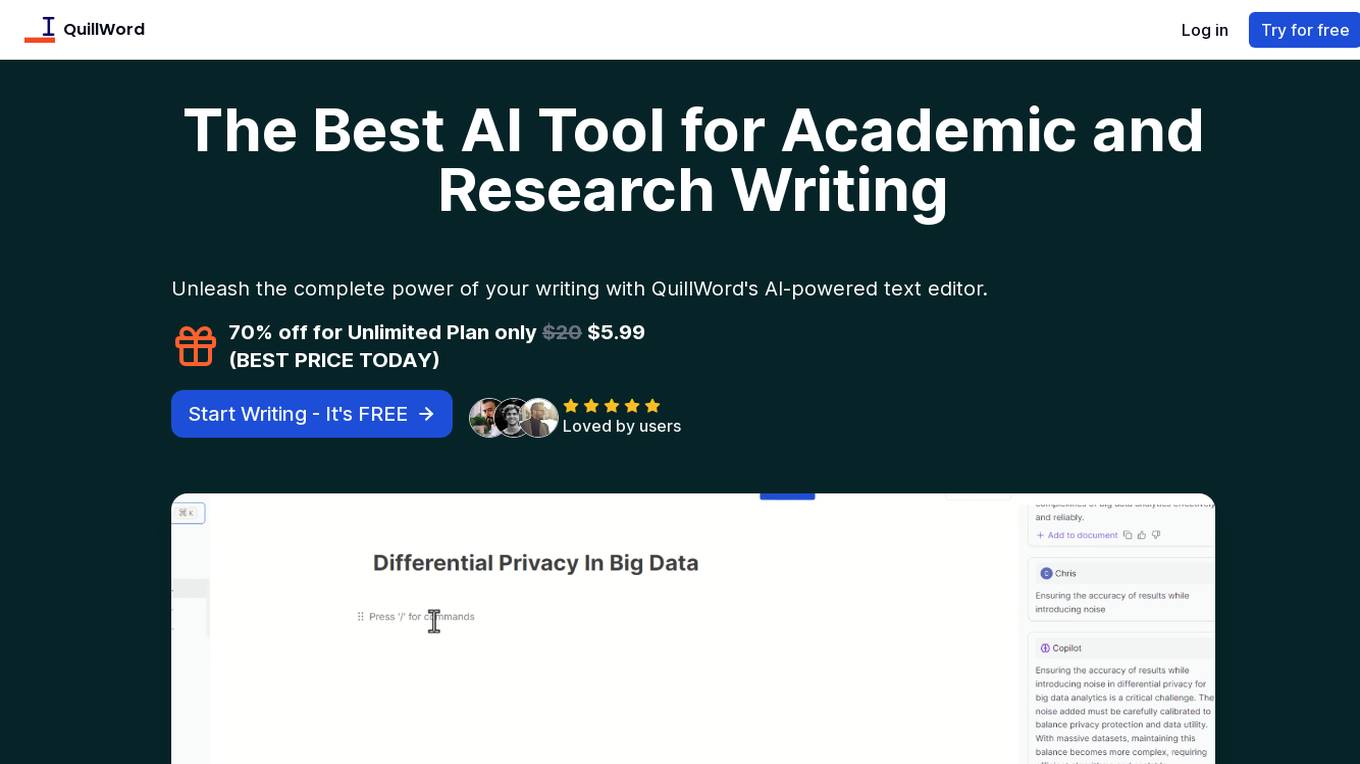
QuillWord
QuillWord is an AI-powered text editor designed to enhance academic and research writing. It offers a range of AI-powered tools, including an email writer, text summarizer, outline generator, essay rewriter, essay extender, essay shortener, essay introduction generator, essay conclusion generator, essay topic generator, research title generator, abstract generator, essay checker, and AI-powered autocompletion. QuillWord also provides citation support in various styles, a reference library, and an AI assistant called Copilot. It is suitable for students, teachers, researchers, and writers who want to improve their writing efficiency and quality.

tldrbot.co
tldrbot.co is a website that provides a summarization tool to help users quickly grasp the key points of lengthy articles or texts. It condenses complex information into concise summaries, making it easier for users to understand and retain important details. The tool is designed to save time for individuals who need to process large amounts of information efficiently.
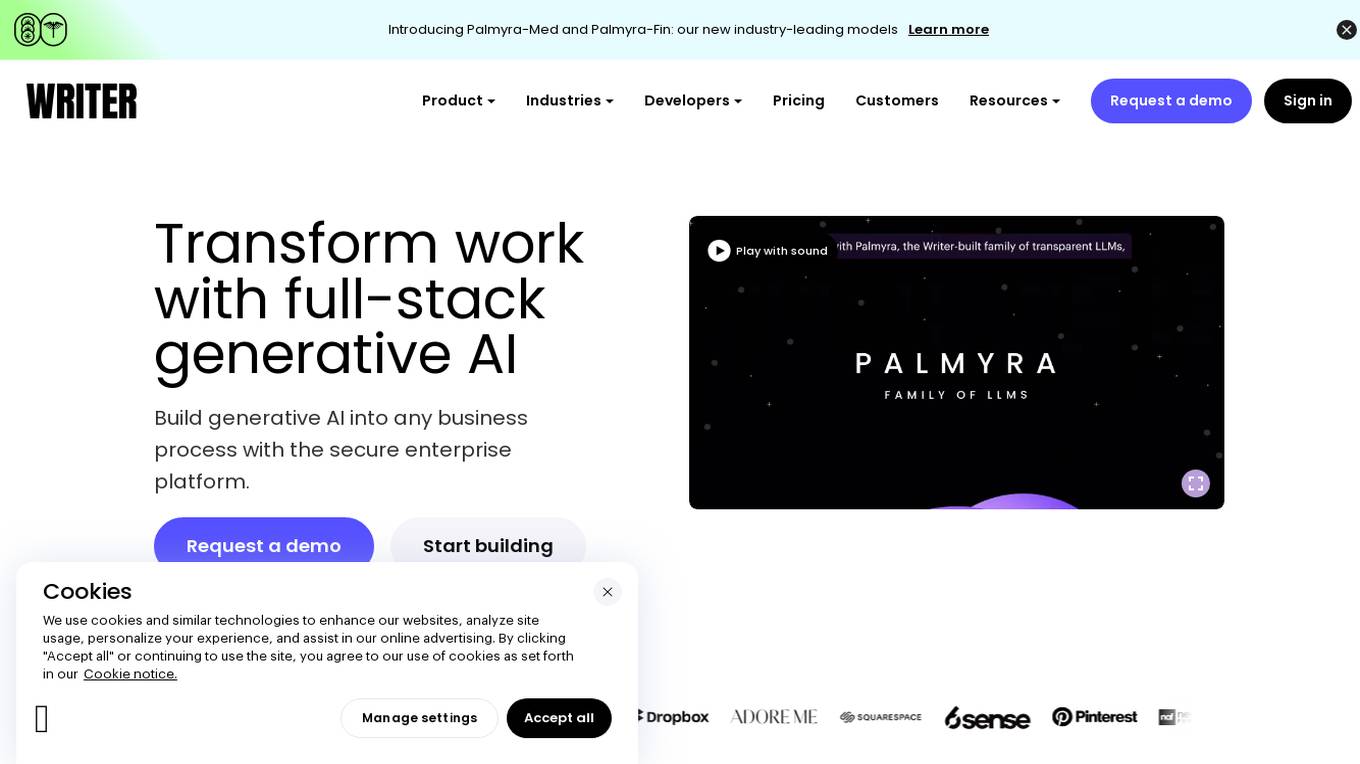
Writer
Writer is a full-stack generative AI platform that offers industry-leading models Palmyra-Med and Palmyra-Fin. It provides a secure enterprise platform to embed generative AI into any business process, enforce legal and brand compliance, and gain insights through analysis. Writer's platform abstracts complexity, allowing users to focus on AI-first workflows without the need to maintain infrastructure. The platform includes Palmyra LLMs, Knowledge Graph, and AI guardrails to ensure quality, control, transparency, accuracy, and security in AI applications.
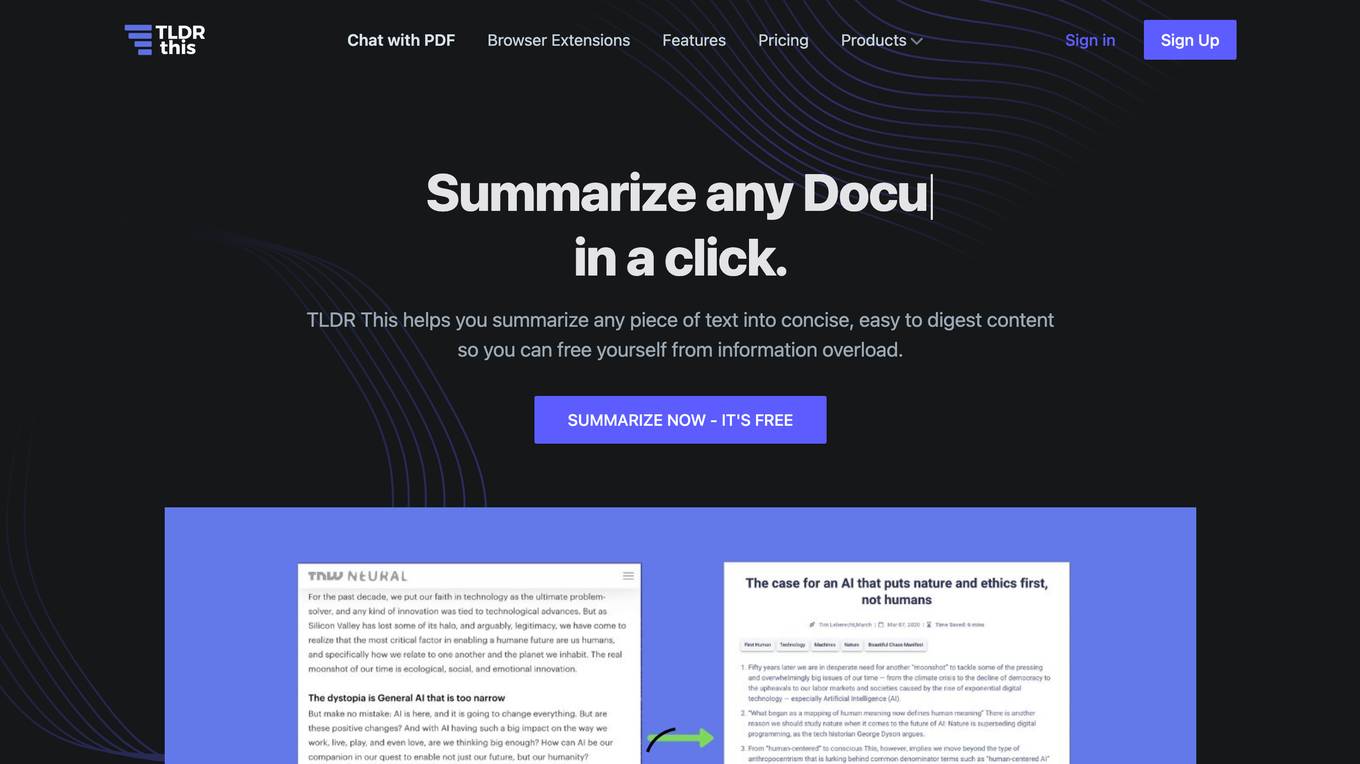
TLDR This
TLDR This is an online article summarizer tool that helps users quickly understand the essence of lengthy content. It uses AI to analyze any piece of text and summarize it automatically, in a way that makes it easy to read, understand, and act on. TLDR This also extracts essential metadata such as author and date information, related images, and the title. Additionally, it estimates the reading time for news articles and blog posts, ensuring users have all the necessary information consolidated in one place for efficient reading. TLDR This is designed for students, writers, teachers, institutions, journalists, and any internet user who needs to quickly understand the essence of lengthy content.
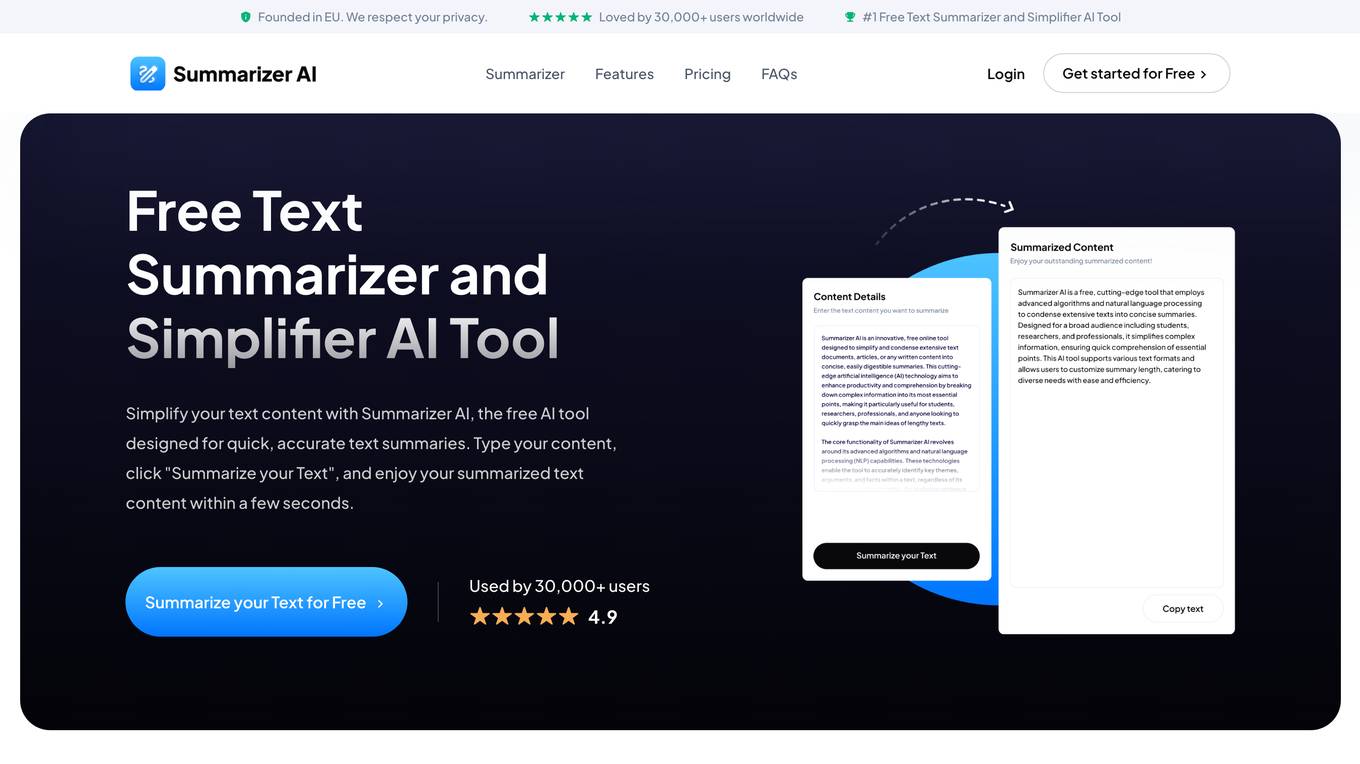
Summarizer AI
Summarizer AI is a free online tool that simplifies and condenses extensive text documents, articles, or any written content into concise, easily digestible summaries. This cutting-edge artificial intelligence (AI) technology aims to enhance productivity and comprehension by breaking down complex information into its most essential points, making it particularly useful for students, researchers, professionals, and anyone looking to quickly grasp the main ideas of lengthy texts. The platform is user-friendly, emphasizing privacy and security for its users. It enhances reading comprehension by highlighting key terms and facilitates efficient knowledge acquisition without compromising on data confidentiality. Summarizer AI stands out for its versatility, ease of use, and commitment to user privacy, making it an invaluable resource for efficient text analysis and summarization.
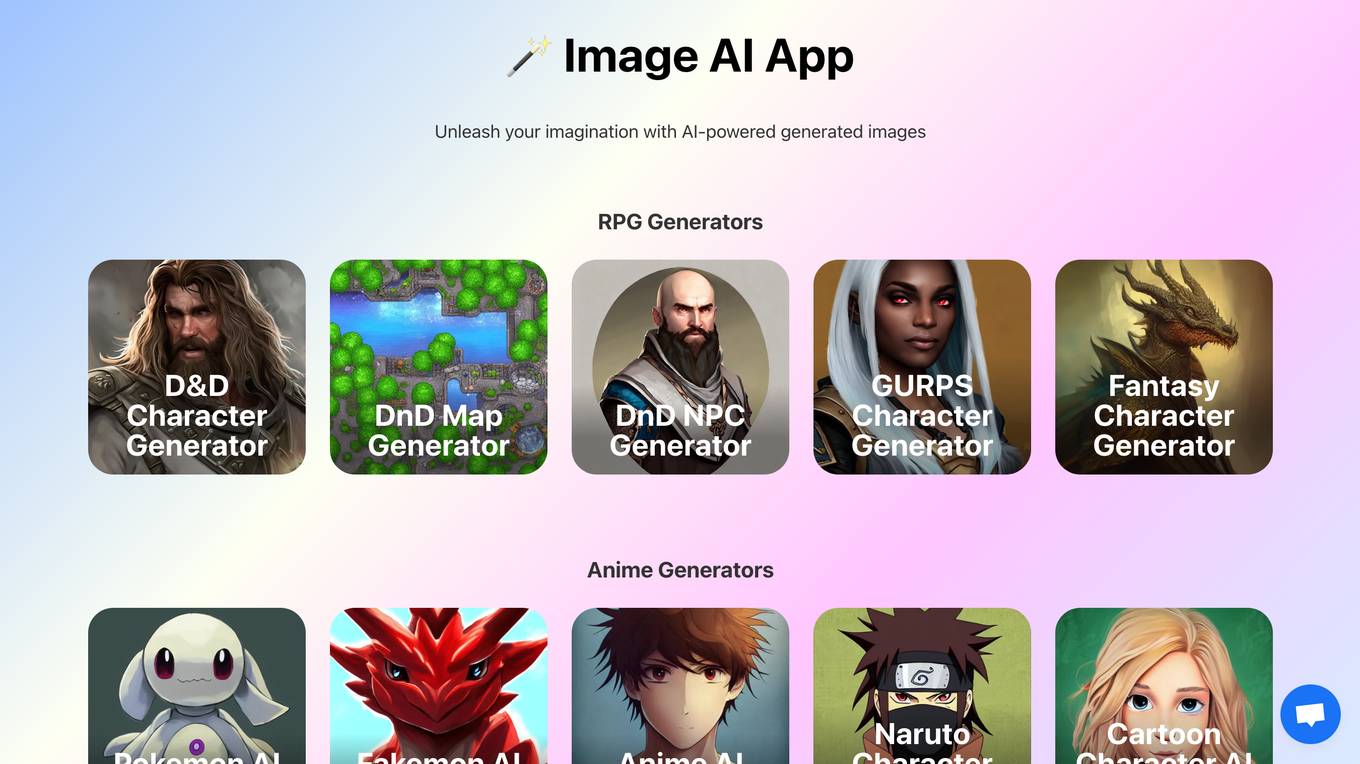
Image AI
Image AI is a powerful tool that allows you to generate unique and realistic images using artificial intelligence. With Image AI, you can create images of people, places, things, and even abstract concepts. The possibilities are endless! Image AI is perfect for artists, designers, writers, and anyone else who wants to create stunning visuals. With Image AI, you can:

ArtBot.ai
ArtBot.ai is an AI-powered art generator that allows users to create unique and visually appealing artwork using natural language prompts. With ArtBot.ai, users can generate images in various styles, including realistic, abstract, and fantasy. The platform is designed to be user-friendly and accessible to people of all skill levels, making it an excellent tool for artists, designers, and anyone looking to explore their creativity.

Lusion AI
Lusion AI is a free AI image generator that allows users to create images from text prompts. It is powered by Stable Diffusion and Re.Art 2.0. The tool is easy to use and can be used to create a wide variety of images, from realistic landscapes to abstract art.

Write with LAIKA
Write with LAIKA is an AI-powered writing tool that provides users with a team of virtual companions designed using artificial intelligence. These companions offer support in editing, summarizing, and giving feedback, creating a collaborative and creative environment for writers. The tool aims to enhance the writing process by providing personalized AI peers to assist users in their creative endeavors.

Clarity Write
Clarity Write is an open-source SaaS script that provides a comprehensive suite of AI-powered tools to transform content creation. With its powerful AI capabilities, users can effortlessly generate high-quality content, create stunning visuals, automate coding tasks, transcribe audio and video files, and engage with AI experts via chatbots. Clarity Write also offers a vast library of over 500 professionally designed templates, a feature-rich editor for refining content, and robust admin tools for streamlined management. By leveraging the capabilities of OpenAI APIs, Clarity Write empowers users to enhance their content creation process, unlock endless creativity, and simplify their operations.
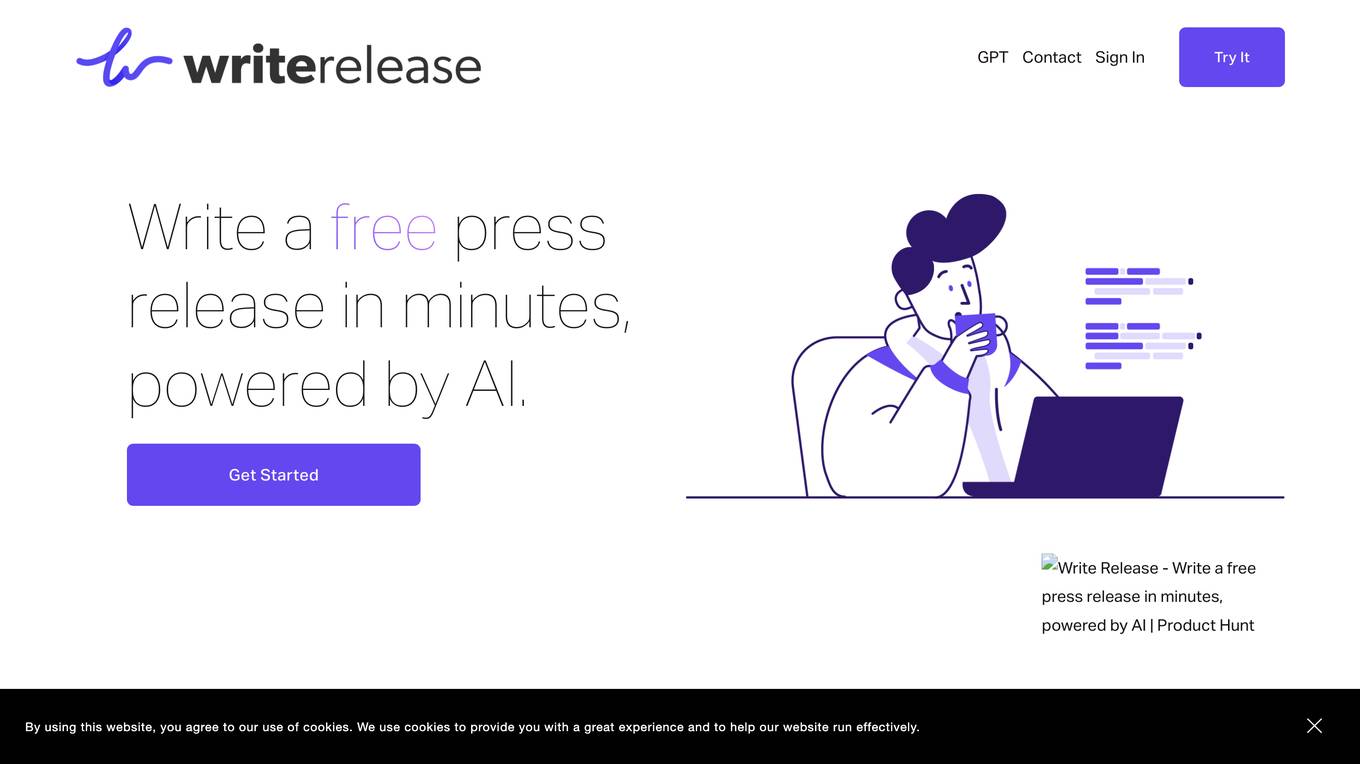
Write Release
Write Release is an AI-powered tool that helps users write press releases in minutes. It is easy to use and free to get started. Users simply answer a few questions, and Write Release will generate a high-quality press release that can be used to promote their company or organization.

Write.homes
Write.homes is an AI content generator designed specifically for real estate agents. It helps in creating property descriptions, listing headlines, emails, social media posts, and more in a matter of seconds. The tool is built to assist brokers and their teams in accelerating their workflow, enhancing marketing content consistency, and improving brand reputation. With features like MLS listing generation, email and drip copy generation, social media content creation, CRM integration, multilingual translation, and templates for brand voice control, Write.homes streamlines the content creation process for real estate professionals.

Write once. Tailor for every role.
This application allows you to write once and tailor your writing for every role. It is a powerful tool that can help you save time and improve the quality of your writing.
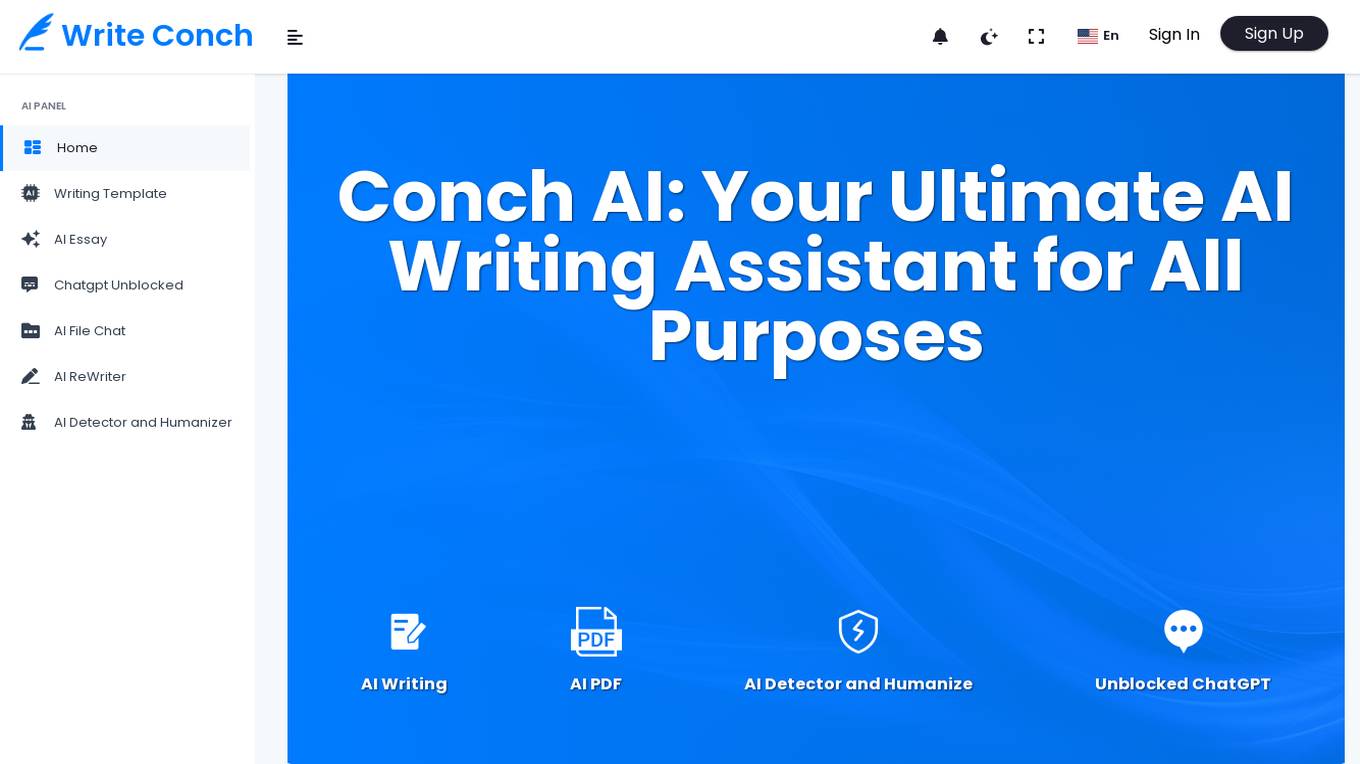
Write Conch
Write Conch is an AI-powered writing assistant that offers a range of tools to enhance your writing experience. With over 100 AI writing templates, you can effortlessly create essays, articles, emails, and more. The AI PDF reader simplifies document navigation and provides deeper insights. ChatGOT allows you to access ChatGPT without logins, offering AI solutions for learning and professional needs. Write Conch also includes AI detection and humanization tools to safeguard your AI content and ensure originality. Whether you're a student, marketer, teacher, researcher, or content creator, Write Conch has the tools to streamline your writing process and boost your productivity.
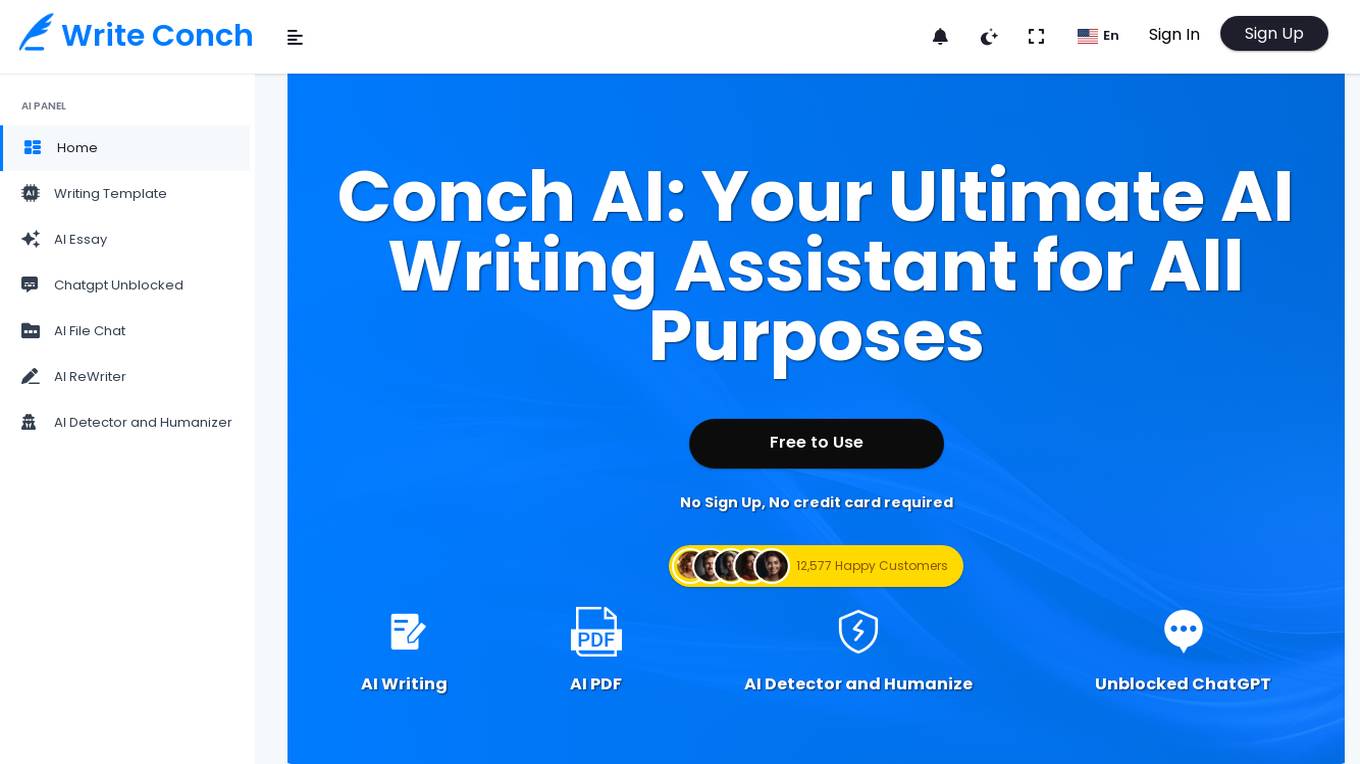
Write Conch
Write Conch is an AI-powered writing assistant that offers a range of tools to enhance your writing experience. With over 100 AI writing templates, you can effortlessly create essays, articles, ad copy, and more. The AI Document Reader simplifies complex texts, providing summaries, definitions, and explanations to improve comprehension. Additionally, Write Conch includes AI detection and humanization tools to ensure the originality and authenticity of your content. Whether you're a student, marketer, teacher, researcher, or content creator, Write Conch has the tools to meet your writing needs.
0 - Open Source AI Tools
20 - OpenAI Gpts
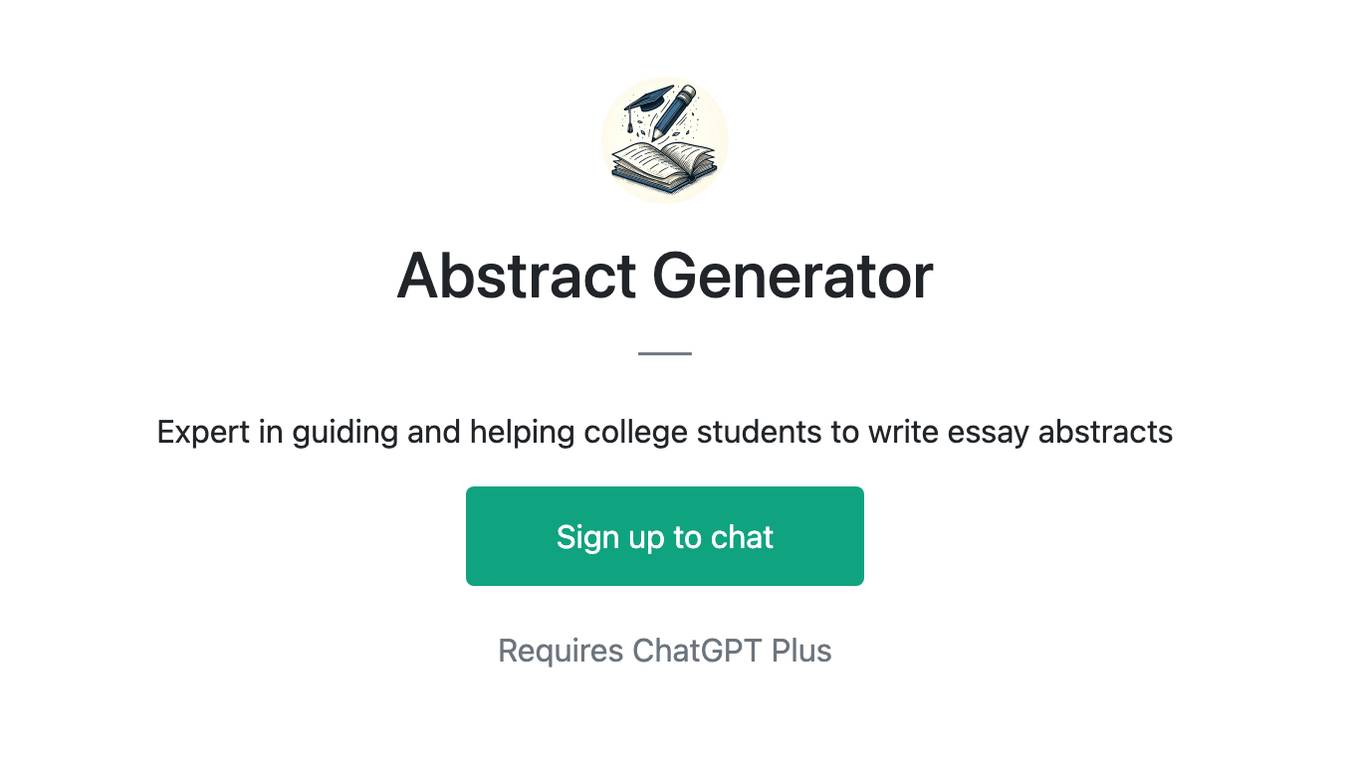
Abstract Generator
Expert in guiding and helping college students to write essay abstracts
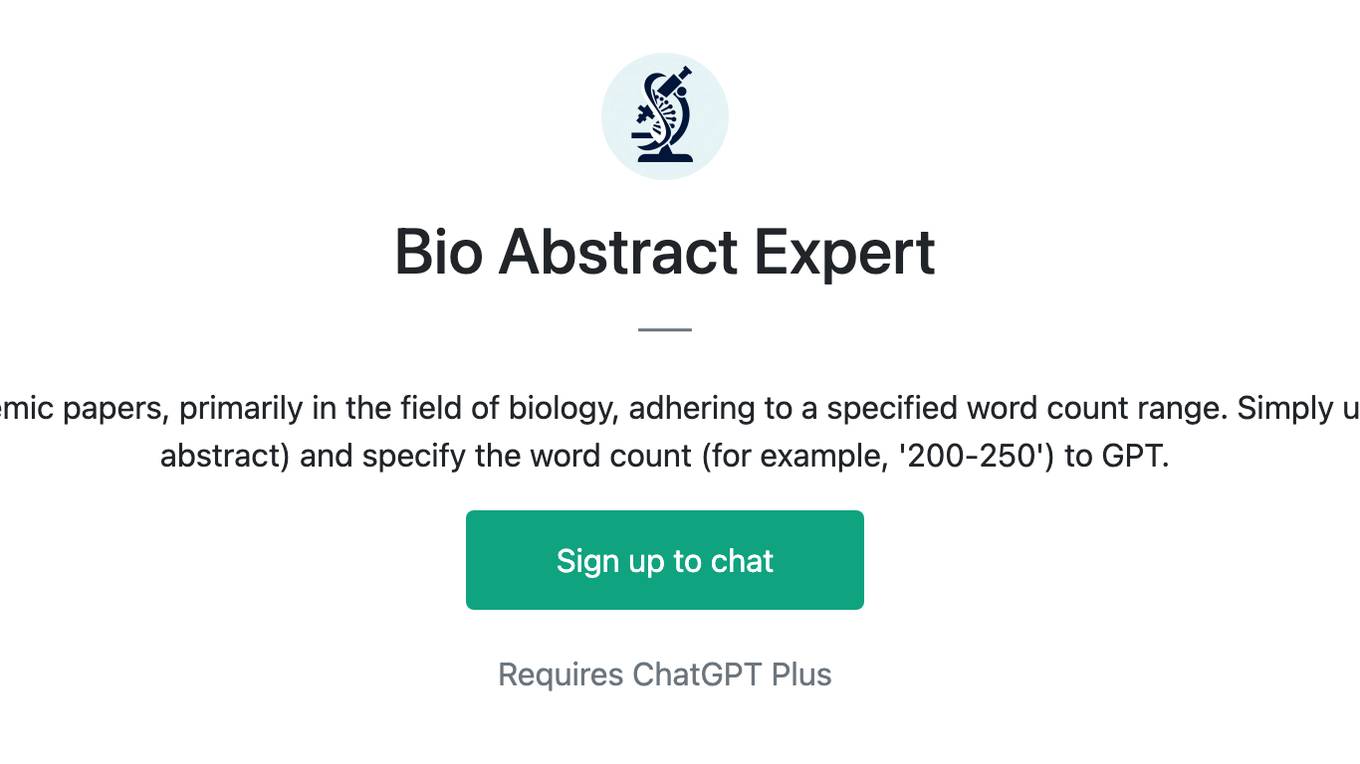
Bio Abstract Expert
Generate a structured abstract for academic papers, primarily in the field of biology, adhering to a specified word count range. Simply upload your manuscript file (without the abstract) and specify the word count (for example, '200-250') to GPT.
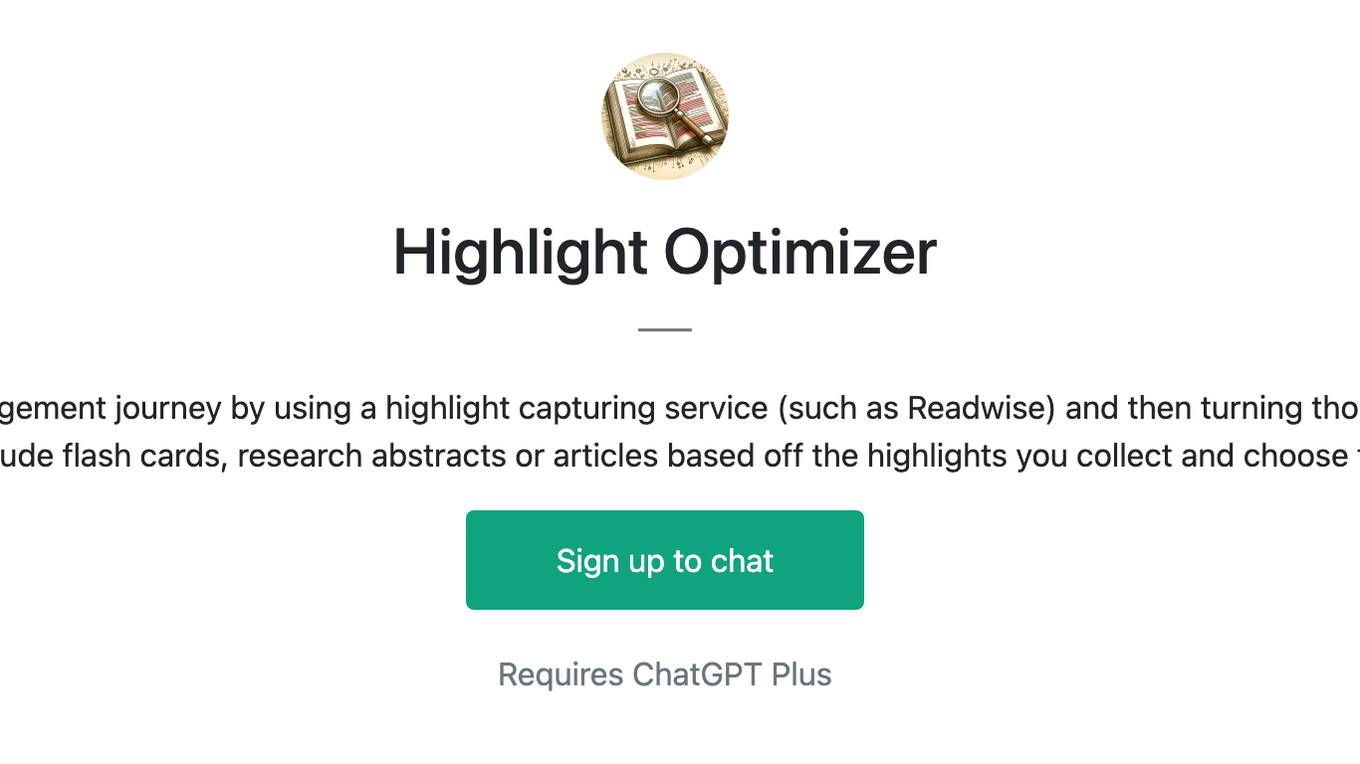
Highlight Optimizer
Supercharge your personal knowledge management journey by using a highlight capturing service (such as Readwise) and then turning those highlights into useful knowledge assets. Examples include flash cards, research abstracts or articles based off the highlights you collect and choose to combine.
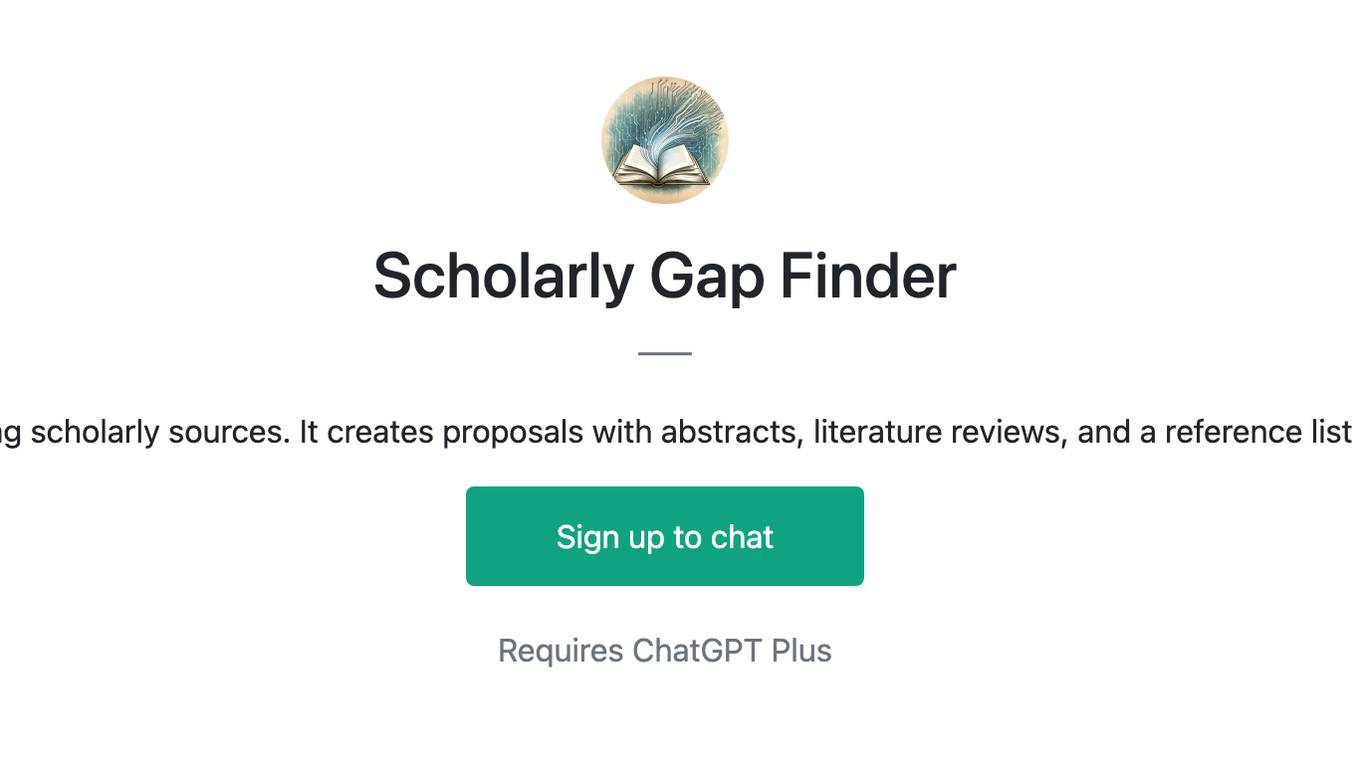
Scholarly Gap Finder
SGF identifies research gaps using scholarly sources. It creates proposals with abstracts, literature reviews, and a reference list tailored for academic research.
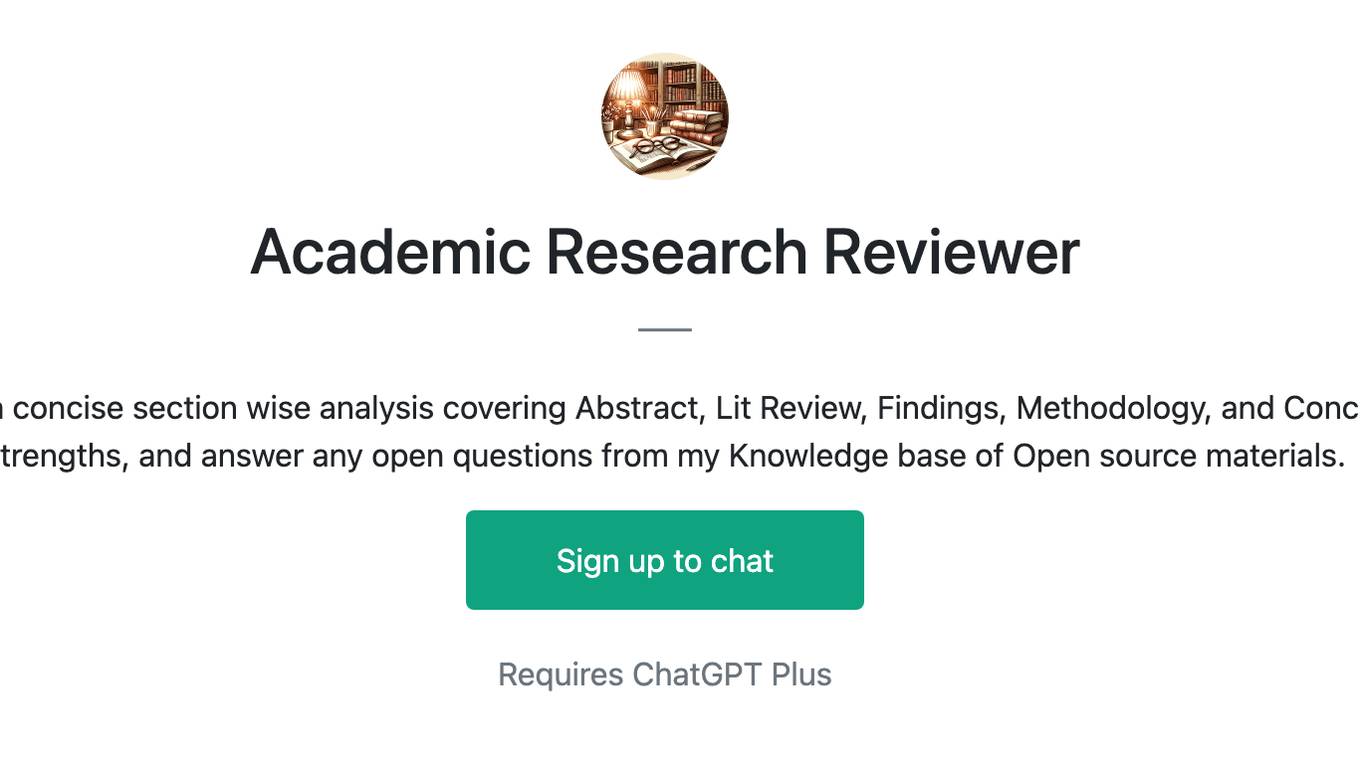
Academic Research Reviewer
Upon uploading a research paper, I provide a concise section wise analysis covering Abstract, Lit Review, Findings, Methodology, and Conclusion. I also critique the work, highlight its strengths, and answer any open questions from my Knowledge base of Open source materials.
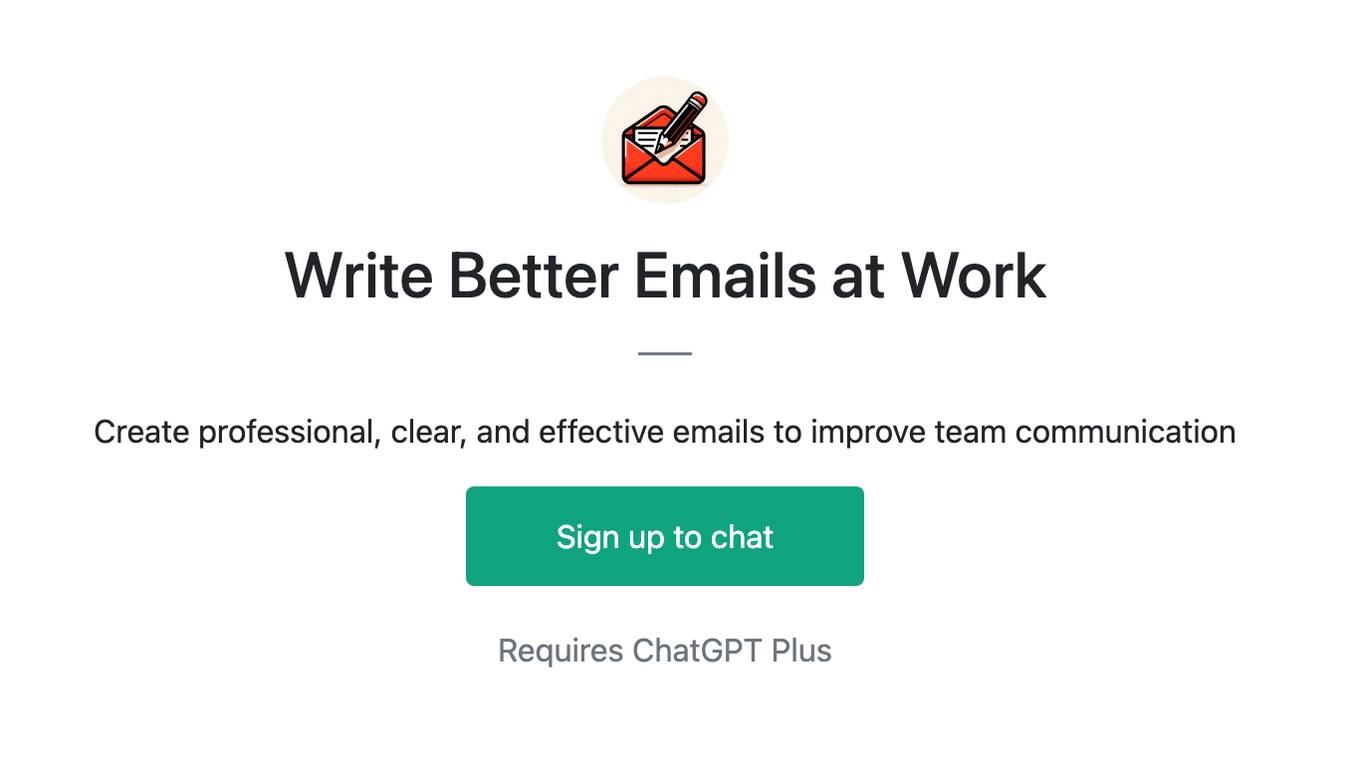
Write Better Emails at Work
Create professional, clear, and effective emails to improve team communication
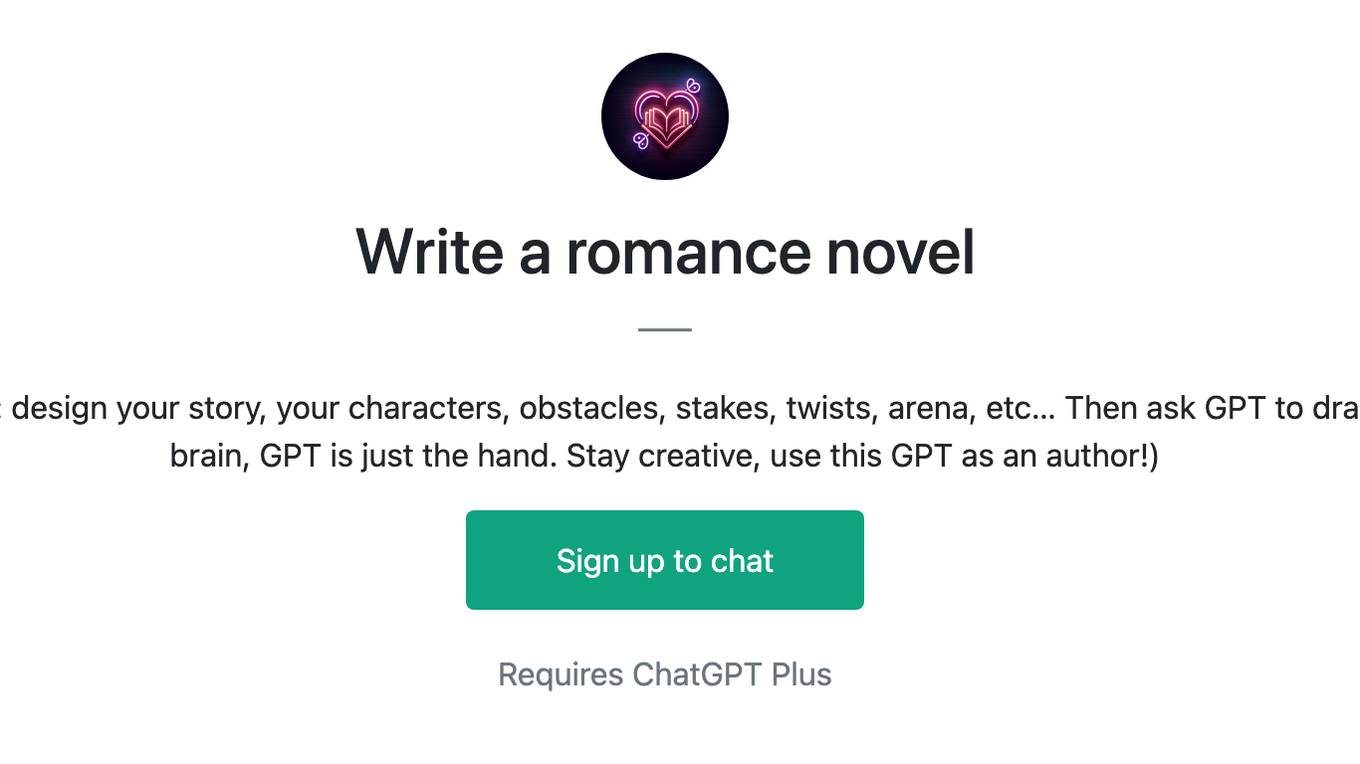
Write a romance novel
Use this GPT to outline your romance novel: design your story, your characters, obstacles, stakes, twists, arena, etc… Then ask GPT to draft the chapters ❤️ (remember: you are the brain, GPT is just the hand. Stay creative, use this GPT as an author!)
